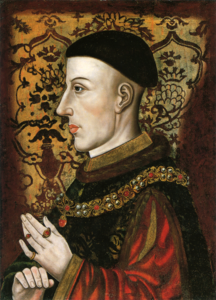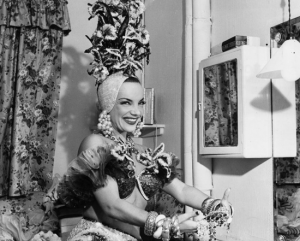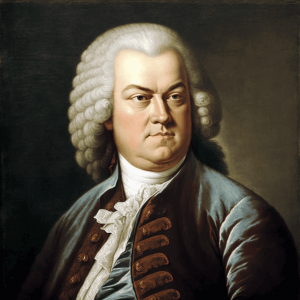The year was 1415, and King Henry V had declared war on France in hopes of claiming the French throne. Because of his ancestry, King Henry V had a legitimate claim to the French throne, and he believed it was his right to rule over France and England. After defeating the French army at the Siege of Harfleur on September 14, 1415, King Henry V took his troops and began his march to Paris. On October 25, 1415, King Henry V faced his greatest battle yet, putting his skills as a general and as a king to the test. The plan that King Henry V used in this battle is what makes him so well known to this day.

Upon reaching the plains of Agincourt, King Henry V discovered that the French army had already been waiting for them. The exact location of the Battle of Agincourt is relatively unknown, as scholars have been debating about the location for quite some time; but they have narrowed it down to the strip of land between the woods of Timecourt and the modern-day village of Agincourt. There were three factors about the battle that helped turn the odds of the battle to the English army’s favor. According to historian Gwilym Dodd, “First, the site of the battle had been selected carefully, as the narrowness of the battlefield allowed the English army to use the terrain to their advantage. Second, the French army was still assembling when battle was joined, which meant that it was not up to strength and lacked cohesion. Third, and crucially, the French planned to attack the English archers with cavalry ahead of the advance of the dismounted French men-at-arms, foundered for lack of numbers.” 1
Before going into the battle, it’s important to know what the French and the English had in mind for the upcoming battle. The layout of the French forces in the battle was designed to imitate the English policy of placing dismounted men-at-arms. This was done with a central body and two wings, with archers at the front. This style of formation was allowed to be adaptable to the English position. If only one battle formed in the center, the French vanguard and the main battle would merge. If you were to look at the total number of troops for both the French and English armies, the French army outnumbered the English army. For layout of the troops, the French decided to divide the army into three central bodies and two small wings, with the wings and the rearguards mounted. As stated by Christopher Phillpotts, “According to Berry Herald, the counts of Richemont and Vendome led the two wings, as specified in the plan. Although it was planned that the archers and crossbowmen should be in front of the wings, at Agincourt they were regarded as superfluous and placed behind them, thus having little or no part in the battle. This plan of action allocated a force of mounted men-at-arms to the Master of the Crossbowmen to advance from behind the left flank and break the line of the English archers preparatory to a massed attack by the battles and the wings on foot.”2 There was a problem with the French formation, however, because they were placed in between the woods of Timecourt and Agincourt, so that only a few of the soldiers placed in the front could raise their weapons. The other issue was the weight of the armor. Because of the rain that had happened the night before the battle, the French wouldn’t be able to handle the mud, causing them to both sink ankle deep, and slip around in the mud.3
The English army, in response to the French army’s formation, began to prepare their own army. The army would be separated into three core parts: the right of the army under the Duke of York, the rear under the command Lord Camoys on the left, and the main body of the army in the center with King Henry V. Henry V couldn’t place his troops as detailed as the French, so he went for a different plan. He arranged the men-at-arms just like the French, but instead he gave the soldiers more room, about three feet at least. The archers were a different story, as Henry V predicted that the French would begin the battle with a cavalry charge against his forces. As stated by Wilfred Brenton Kerr, “Accordingly, while leaving most of them in their normal position on the flanks, he placed detachments in the spaces between the sections of lances to bring an inside flank fire on the charging horsemen. It would not do to let these archers stay in the line for the clash with the French men at arms, but Henry must have hoped for time enough after the cavalry charge to send them back to the flanks and to close the ranks of his lances. In accord with this plan, the archers, marshaled by Thomas Erpingham, took their places at the sides and in the line, four and five deep, and planted their stakes in front of them. Some of the archers had pieces of armor, either purchased or picked up, but most had no armor. They stood with bows and arrows ready and their striking weapons at their belts.”4. It’s also important to note that the soft soil from the newly plowed fields had little effect on the English army since all forces fought on foot, not on horseback.5 The same goes for the mud as well, since the English army had little to no armor on for the fight.

Perhaps the most interesting part of the Battle of Agincourt was King Henry V’s use of the English archers. The English archers were all given the powerful English longbow, a weapon that was used multiple times during the Hundred Year’s War. Today, it might seem like the archers were given the credit for carrying the entire battle on their backs, but this is far from the truth. Sure, the archers were responsible for most of the damage to the French army, but they had glaring flaws. The English archers, in truth, were very vulnerable, especially to the cavalry charges that King Henry V assumed the French would do. Of course, Henry and his advisors recognized the problem and ordered that all the archers prepare stakes that measured about six feet long to be driven into the ground in front of them to form a protective barrier. These stakes would give the archers a sense of security and protection so they could begin their assault on the French army. According to Gwilym Dodd, “As a result, the archers were able to significantly blunt the enemy forces, making the English men-at-arms’ jobs much easier, who can take equal credit with the archers. Aside from the English longbow, what made the archers so distinctive was the sheer number of them compared to the men-at-arms. The ratio of archers to men-at-arms was 5:1 in an army comprising of six thousand men.”6

In the end, the English pulled out a decisive victory against the French, using innovative strategies in the Battle of Agincourt. But, if the French had the superior numbers in the battle, why didn’t they win? While the French did have the superior numbers, they failed to take their enemy too seriously. Their cavalry only made a half-hearted attempt to run down the English archers, there was chaos among the members of the vanguard attacking the English army, and the main and rear made no effort to help the front of the army. According to Wilfred Brenton Kerr, “In short, overconfidence and individualism were the roots of French defeat. It is concluded that the Battle of Agincourt was no true test of the relative merits of the English and French soldiery, but rather it showed the English at their best and the French at their worst.”7
- Gwilym Dodd, “Henry’s HOLLOW VICTORY,” History Today 65, no. 10 (October 1, 2015): 22-23. ↵
- Christopher Phillpotts, “The French Plan of Battle during the Agincourt Campaign,” The English Historical Review 99, no. 390 (1984): 62. ↵
- I. M. U. Muir Wilson, “Henry V. of England in France, 1415-1422,” The Scottish Historical Review 20, no. 77 (1922): 37. ↵
- Wilfred Brenton Kerr, “The English Soldier in the Campaign of Agincourt,” The Journal of the American Military Institute 4, no. 4 (1940): 213, https://doi.org/10.2307/3038684. ↵
- I. M. U. Muir Wilson, “Henry V. of England in France, 1415-1422,” The Scottish Historical Review 20, no. 77 (1922): 37. ↵
- Gwilym Dodd, “Henry’s HOLLOW VICTORY,” History Today 65, no. 10 (October 1, 2015): 21-22. ↵
- Wilfred Brenton Kerr, “AGINCOURT AND VALMONT: CONTRAST IN THE TACTICS OF FRENCH AND ENGLISH DURING HENRY V’s INVASIONS OF FRANCE,” Journal of the Society for Army Historical Research 22, no. 86 (1943): 66. ↵


1 comment
Elliot Avigael
In the long history of English monarchs, King Henry V is one of my top favorites. As the legend goes, he went to war simply because the King of France insulted him; which I find to be absolutely, for lack of a better word, super cool. Even at his young age Henry made it clear that he was not a monarch to be toyed with. If you haven’t done so already, I highly recommend you watch the Hollywood version of this with Timothy Chalamet and Joel Edgerton–it’s amazing. Your article was a deep and historic account of a decisive battle that I believe tends to be overlooked in military history–well done.